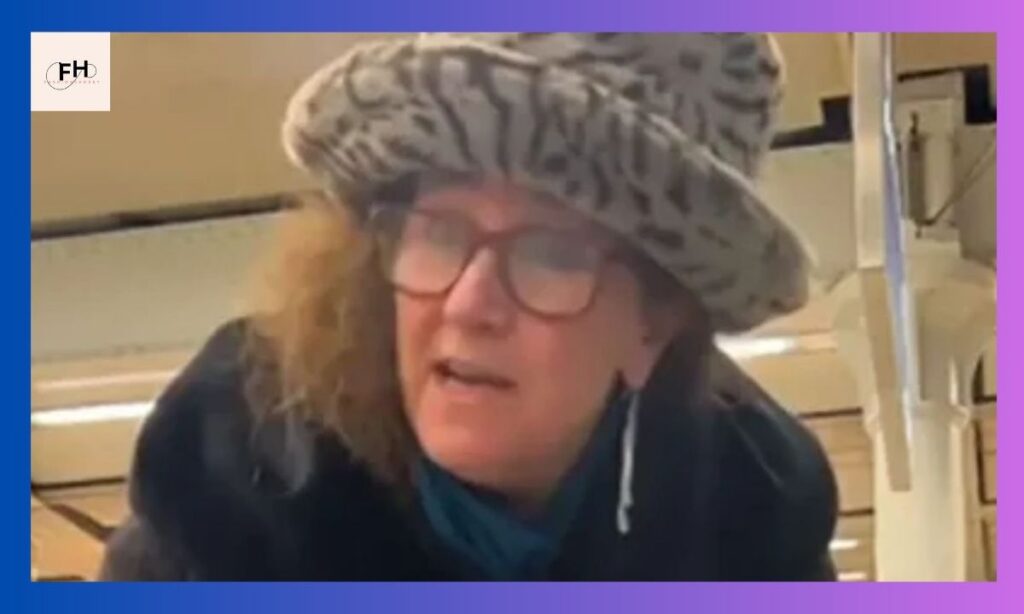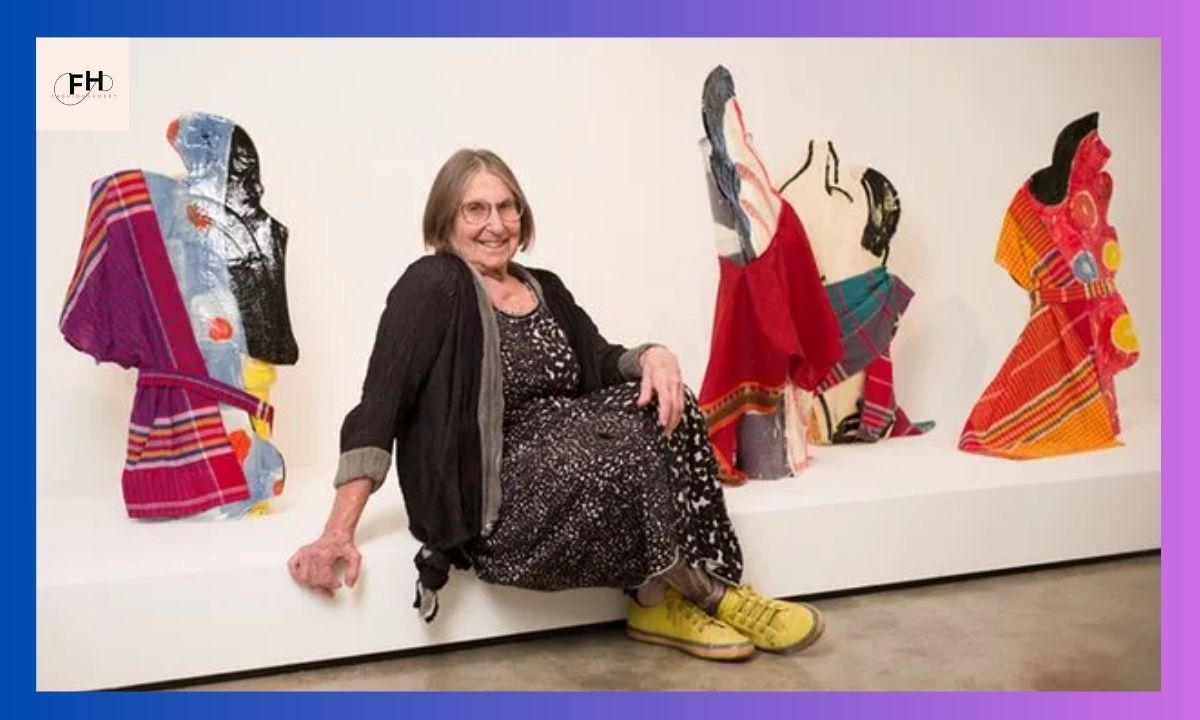In the dynamic landscape of contemporary art, Auriett Woodman stands as a beacon of innovation and tradition. Her work represents a harmonious blend of time-honored craftsmanship and cutting-edge technology.
Through decades of dedication, she has carved out a unique niche in the art world.
The Artistic Journey of Auriett Woodman
Born into a family of skilled artisans, Woodman’s earliest memories revolve around the sweet scent of wood shavings and the rhythmic sound of carving tools. Her childhood home doubled as a workshop where traditional crafts flourished. These early experiences shaped her future path in profound ways.
The journey began with simple wood carving lessons from her father. Each piece taught her patience and precision. By age twelve, she could craft intricate wooden figures that captured attention. Her teenage years brought experimentation with different woods and techniques.
Local art fairs provided her first taste of public recognition. Her pieces stood out for their unusual combinations of materials. Early critics noted her natural ability to preserve traditional elements while introducing modern twists. This unique approach would become her signature style.
Tradition Meets Innovation: Woodman’s Signature Approach
Auriett Woodman work defies easy categorization. She seamlessly merges ancient woodworking techniques with modern technology. Each piece tells a story of evolution and respect for craft heritage. Her studio houses both traditional carving tools and state-of-the-art digital equipment.
Her process often begins with hand-sketched designs. These initial ideas transform through digital modeling software. The final execution combines manual craftsmanship with technological precision. This dual approach allows for unprecedented artistic expression.
Innovation flows through every aspect of her work. LED lights illuminate carved wooden passages. Motion sensors trigger interactive elements in sculptures. Yet, traditional techniques remain at the core of each creation. This balance creates pieces that feel both timeless and contemporary.
Bridging Techniques: A Deep Dive
Auriett Woodman’s mastery lies in her ability to connect different artistic traditions. She studies crafting techniques from various cultures. Her work often combines elements from multiple traditions into single pieces. This cross-cultural approach creates unique artistic dialogues.
Japanese Kintsugi influences appear in her treatment of wooden joins. African beadwork patterns inspire her digital light installations. Native American weaving techniques merge with European woodcarving traditions. Each combination creates something entirely new.
Her methodology involves careful research and experimentation. She documents traditional techniques before adapting them. Modern tools enhance rather than replace traditional methods. This approach preserves cultural heritage while pushing artistic boundaries.
Materials Mastery: Woodman’s Artistic Palette

Wood remains Auriett Woodman’s primary medium, but her material vocabulary extends far beyond. She incorporates metals, resins, and textiles into her work. Each material serves a specific purpose in her artistic vision. The combinations create pieces with depth and complexity.
Her wood selection process shows remarkable attention to detail. She sources sustainable hardwoods from around the world. Each piece considers the wood’s natural grain and character. These characteristics influence the final design and execution.
Modern materials add new dimensions to her work. Fiber optic cables weave through wooden sculptures. Resin layers capture and reflect light. Metal elements provide structural support and visual contrast. This material diversity enables greater artistic expression.
Signature Works and Contributions
The “Tree of Life” series stands as Auriett Woodman’s most recognized work. These large-scale installations combine natural and technological elements. Each piece responds to viewer presence through subtle light changes. The series has toured major museums worldwide.
“Digital Forest” represents another breakthrough collection. This series explores the relationship between nature and technology. Interactive elements respond to environmental changes. The pieces challenge viewers to reconsider their relationship with nature.
Her “Anthropocene Series” addresses environmental concerns. These works combine traditional crafting with modern materials. They serve as powerful commentary on human impact on nature. Each piece encourages viewer reflection and dialogue.
Influences and Inspirations
Nature provides Auriett Woodman’s primary inspiration source. She studies organic forms and growth patterns. These observations inform her design choices. Natural elements appear throughout her work in both obvious and subtle ways.
Cultural mythology plays a significant role in her artistic vision. She draws from diverse folkloric traditions. These stories influence her symbolic choices. The resulting works connect with viewers across cultural boundaries.
Contemporary environmental issues shape her recent work. She addresses climate change through artistic expression. Her pieces often incorporate sustainable materials and practices. This commitment influences both her art and teaching.
Read This Blog: Avakov’s Lavish Wedding: A Fusion of Tradition and Modern Elegance
Impact on the Modern Craft Movement
Auriett Woodman’s influence extends throughout the contemporary craft world. Young artists study her innovative techniques. Her approach has inspired new directions in craft education. Many institutions have adopted her integrated teaching methods.
She has helped elevate craft to fine art status. Her work appears in major galleries alongside traditional fine art. This placement has helped break down artificial barriers between craft and art. The impact continues to reshape the art world’s perspective on craft.
Professional organizations seek her guidance on craft evolution. She serves on multiple advisory boards. Her influence shapes policies and practices in craft education. These contributions ensure craft’s relevance in contemporary art.
A Global Presence: Woodman’s International Reach
Major museums worldwide feature Auriett Woodman’s work. Her pieces appear in permanent collections across continents. International exhibitions showcase her innovative approach. This global presence has expanded craft’s audience significantly.
Cultural exchange programs frequently involve her participation. She conducts workshops in various countries. These experiences influence her artistic development. Each interaction brings new elements to her work.
Her work bridges cultural divides through common artistic language. Audiences connect with familiar elements in new contexts. This accessibility has helped expand appreciation for contemporary craft. Her influence continues to grow internationally.
Collaborations: Expanding Artistic Horizons
Auriett Woodman actively seeks collaborative opportunities. She works with artists from diverse backgrounds. Scientists and technologists contribute to her projects. These partnerships create unexpected artistic innovations.
The “Synesthesia Project” exemplifies her collaborative approach. This work combined art, science, and technology. Musicians and neuroscientists participated in its creation. The resulting installation toured international venues successfully.
Educational institutions partner with her regularly. She develops innovative teaching programs. These collaborations benefit students worldwide. Each partnership expands the possibilities for craft education.
Sustainability in Craftsmanship
Environmental responsibility guides Auriett Woodman’s practice. She sources materials sustainably. Her studio operates with minimal environmental impact. These practices influence others in the field.
She develops eco-friendly finishing techniques. Natural materials replace synthetic options where possible. Waste reduction strategies inform her process. These approaches demonstrate sustainable craft practices.
Her advocacy extends beyond her own work. She consults on sustainable craft practices. Organizations seek her input on environmental policies. This influence helps shift the industry toward sustainability.
Auriett Woodman’s Educational Contributions
Education remains central to Auriett Woodman’s mission. She develops comprehensive teaching programs. These programs combine traditional and modern techniques. Students benefit from her integrated approach.
Her teaching philosophy emphasizes hands-on experience. Students learn both traditional and digital tools. This combination prepares them for contemporary practice. Many graduates achieve significant professional success.
She creates online resources for distance learning. These materials reach students globally. Digital platforms extend her educational impact. This approach makes craft education more accessible.
Read This Blog:Who is Abraham Quiros Villalba? A Legacy of Resilience
Mentorship and Workshops
Auriett Woodman’s mentorship program supports emerging artists. She provides individual guidance and feedback. Participants develop their unique artistic voices. Many mentees become successful professional artists.
Workshop programs occur throughout the year. These events combine theory and practice. Participants learn integrated craft techniques. The experiences often transform artistic approaches.
International workshops promote cultural exchange. Participants share traditional techniques. New artistic combinations emerge naturally. These interactions enrich the global craft community.
Integrating Technology into Education
Digital tools enhance traditional craft education. Students learn both manual and digital skills. This integration prepares them for contemporary practice. Technology becomes another tool for artistic expression.
Virtual reality applications assist teaching. Students visualize complex designs easily. Remote learning opportunities expand. These innovations make craft education more accessible.
3D printing complements traditional techniques. Students explore form through multiple methods. Digital design skills enhance traditional practices. This approach creates versatile contemporary artists.
Read This Blog: The Best Vintage Stores in Dallas Fort Worth
Conclusion
Auriett Woodman’s impact on contemporary craft continues growing. Her innovative approach bridges tradition and technology. Students worldwide benefit from her educational contributions. The art world recognizes her significance increasingly.
Her work demonstrates craft’s evolving nature. Traditional skills remain relevant in digital ages. Innovation enhances rather than replaces tradition. This balance ensures craft’s continued vitality.
The future of craft looks bright under her influence. New generations embrace her integrated approach. Sustainability practices become industry standards. Her legacy shapes craft’s ongoing evolution.
Frequently Asked Questions
How did Auriett Woodman begin her artistic career?
She started learning traditional woodworking from her father at a young age, developing her skills through local art fairs and formal education.
What materials does Woodman typically use in her work?
She primarily works with wood but incorporates metals, resins, textiles, and digital elements to create innovative mixed-media pieces.
How does Woodman incorporate technology into traditional crafts?
She integrates LED lighting, motion sensors, and digital modeling while maintaining traditional woodworking techniques at the core of her work.
What is Woodman’s most famous work?
The “Tree of Life” series, which combines traditional woodcarving with interactive digital elements, stands as her most recognized work.
How does Woodman contribute to craft education?
She runs comprehensive workshops and mentorship programs that combine traditional crafting techniques with modern technology and sustainable practices.





